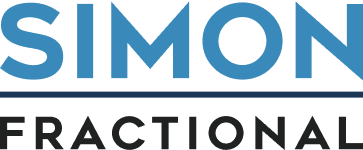In B2B SaaS, building a customer-centric content strategy is essential for resonating with your audience and driving engagement. Today’s buyers are more informed and expect content that speaks directly to their needs. By putting the customer at the center of your content efforts, you can build trust, shorten the sales cycle, and enhance brand loyalty. Here’s how to craft a strategy that will truly connect with your audience and elevate your B2B SaaS growth.

1. Know Your Audience: Developing In-Depth Buyer Personas
The foundation of a customer-centric content strategy is a clear understanding of who your ideal customers are. Buyer personas allow you to segment your audience and tailor content to address their specific pain points and goals.
Steps to Develop Detailed Buyer Personas:
- Collect Data: Analyze data from your CRM, website analytics, and social media to identify common traits among your customers.
- Conduct Interviews: Speak directly to a mix of your current clients, prospects, and even churned clients to gather insights on their needs and challenges.
- Use Surveys: Distribute surveys to both customers and sales teams, as sales reps often have deep insights into customer motivations and barriers.
Example Insight: Research by Gartner shows that companies that use detailed buyer personas experience a 124% increase in lead generation effectiveness.
2. Map Content to the Buyer’s Journey
B2B SaaS buyers go through a journey from awareness to consideration to decision-making. Your content strategy should reflect this journey by providing valuable information at each stage.
Content for Each Stage:
- Awareness Stage: Focus on educational content, such as blog posts, eBooks, and industry reports, that addresses your customers’ primary pain points.
- Consideration Stage: Offer case studies, webinars, and comparison guides that illustrate how your product can solve specific challenges.
- Decision Stage: Provide product demos, testimonials, and detailed FAQs that help prospects make a final decision.
Data Point: According to Demand Gen Report, 47% of buyers viewed 3-5 pieces of content before engaging with a sales rep, highlighting the importance of multi-touch content.
3. Leverage Storytelling to Humanize Your Brand
In B2B SaaS, storytelling is a powerful way to connect with buyers on an emotional level. Stories make your content memorable and relatable, helping potential customers see the real-world impact of your solutions.
How to Implement Storytelling:
- Case Studies: Show real-world applications of your software, detailing specific challenges, solutions, and results.
- Customer Success Stories: Highlight stories from happy customers who have benefited from your product. This can be done through videos, articles, or even social media posts.
- Thought Leadership Articles: Share your insights on industry trends or future advancements, positioning your company as a leader in the space.
Example: Microsoft’s “Real Stories” campaign emphasizes customer experiences, showcasing how their technology changes lives and drives business growth.
4. Optimize Content for SEO to Drive Organic Traffic
SEO is a key component of a successful B2B SaaS content strategy. By optimizing your content for relevant keywords, you increase the chances of reaching new audiences organically.
SEO Best Practices:
- Keyword Research: Identify keywords related to your customer’s pain points. Tools like SEMrush or Ahrefs can provide insight into high-volume keywords.
- On-Page SEO: Use keywords strategically in titles, headers, meta descriptions, and body content without overstuffing.
- Quality Over Quantity: Focus on creating high-value content that thoroughly addresses the topic, as search engines prioritize content that’s useful and relevant.
Industry Insight: A study from BrightEdge shows that 53% of website traffic comes from organic search, highlighting the importance of SEO.
5. Track and Measure Content Performance
Creating customer-centric content is only effective if you measure its impact. By analyzing content performance, you can identify what resonates with your audience and continuously improve.
Key Metrics to Track:
- Engagement Metrics: Track metrics like time on page, bounce rate, and social shares to understand how users are interacting with your content.
- Conversion Rates: Measure how well each piece of content is converting visitors into leads or sales.
- Lead Scoring: Use lead scoring to assess which content topics and types are most effective in moving leads down the funnel.
Example Insight: Companies that track and analyze content performance are 60% more likely to improve their conversion rates, according to Content Marketing Institute.
6. Iterating and Improving Content Based on Feedback
A customer-centric strategy is always evolving. Gathering and acting on feedback from your audience is key to refining your content strategy over time.
Ways to Collect Feedback:
- Surveys and Polls: Regularly ask your audience what type of content they find most valuable and what topics they want to see more of.
- Monitor Engagement Trends: Keep track of top-performing content and determine why it resonates so well.
- A/B Testing: Experiment with different headlines, CTAs, and formats to see what performs best.
Data Insight: According to MarketingSherpa, 73% of marketers who test and improve their content based on feedback see a marked increase in customer engagement.
Conclusion
Building a customer-centric content strategy is essential for B2B SaaS companies looking to establish trust, shorten sales cycles, and drive growth. By understanding your audience, aligning content with the buyer’s journey, and continuously optimizing based on feedback, you can create content that not only attracts leads but also nurtures and converts them. Embrace a customer-first mindset, and your content will drive sustainable growth for your SaaS business.
Next Steps:
Interested in developing a customer-centric content strategy? Contact Simon Fractional to discuss how we can tailor a strategy to meet your business goals.
Doug Simon
My experience in B2B SaaS started in 2010 when I developed a first-of-its-kind product, creating an entire new category.

